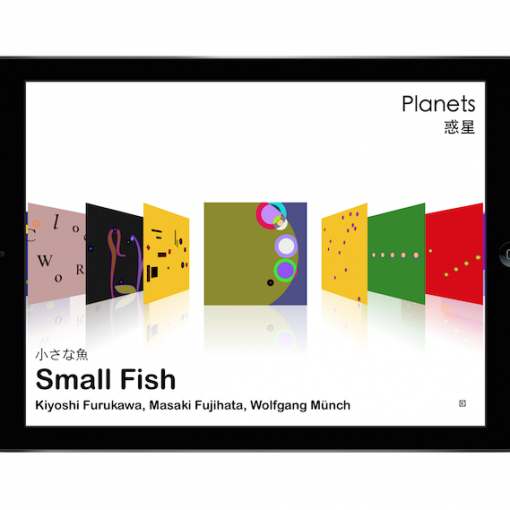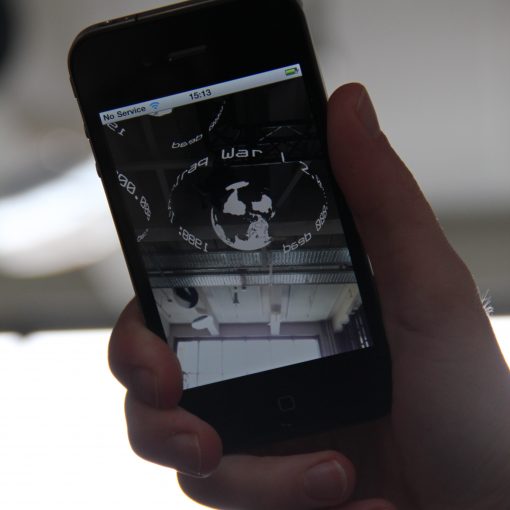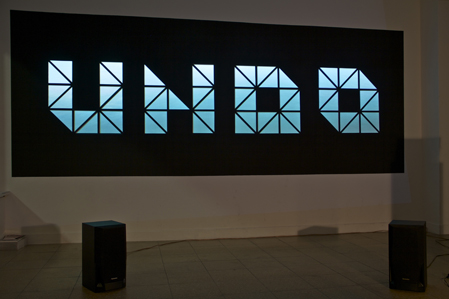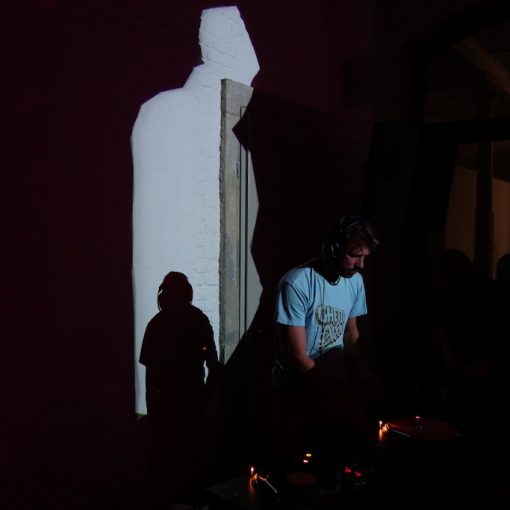A distributed art installation and intervention with mobile devices in art spaces
The Peers app makes it possible for users to interact visually with nearby mobile devices when sharing the same WLAN. The users’ camera streams are visually altered and can be viewed by superimposing them over one’s own camera image, giving users a way to immerse themselves in the worlds of the other participants.
A user can select one live stream at a time from the streams of all participants. At any given moment, users can access completely different streams, meaning that the participants do not necessarily meet.
Each interaction with the app changes the imaging parameters for each participant by exchanging data between devices. Filters, blending, image cropping, and delay can be influenced by the individual users on the network.
Parallel to the app, a digital platform for artists and cultural institutions is also being established. Here, they can submit created videos to be embedded in the app as “fake” video streams—not clearly identifiable as such—among the “real” live streams. This will create a video pool of artistic statements that confront users with imaginary situations. The staged “fake” recordings are intended to provide targeted emotional and mental stimuli and to sensitize users to disinformation.
By implementing an aspect of immersive communication, the application has the potential to reach a global community of users as a novel social media application with chat groups and personal video content uploads.
The Peers project has been developed by visual artist and cultural manager Isabel Belherdis and media artist and computer scientist Jens Barth. Over the last six months, they have been researching the following questions, among many others:
In today’s digital communication media, live images of participants are less like reality and more like a two-dimensional image—a projection. How can this isolated visual coexistence be transformed into a vibrant togetherness and therefore a way of digitally touching?
“Fake news” and deliberate disinformation are a growing part of our everyday lives and media consumption. How can art help make users aware of the boundaries between reality and fiction?
What feelings can be evoked by the conscious sharing of one’s camera data while simultaneously viewing the camera data of strangers? How relevant is privacy for the individual in light of the omnipresent networking of digital devices?
Since the installation is not tied to a specific location, it can be integrated into any exhibition or event. This could create an opportunity to compare how museum visitors from different cultural backgrounds interact and behave in relation to the intervention, in turn providing material for an artistic or interdisciplinary discussion.





